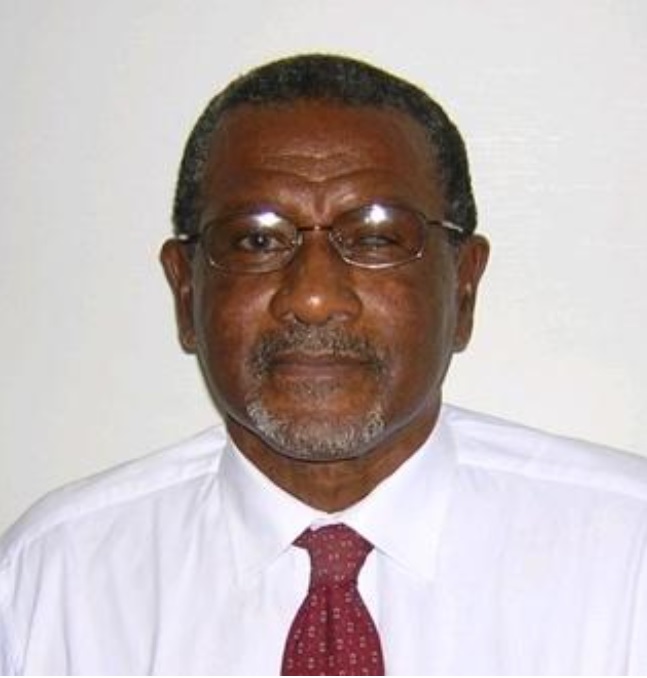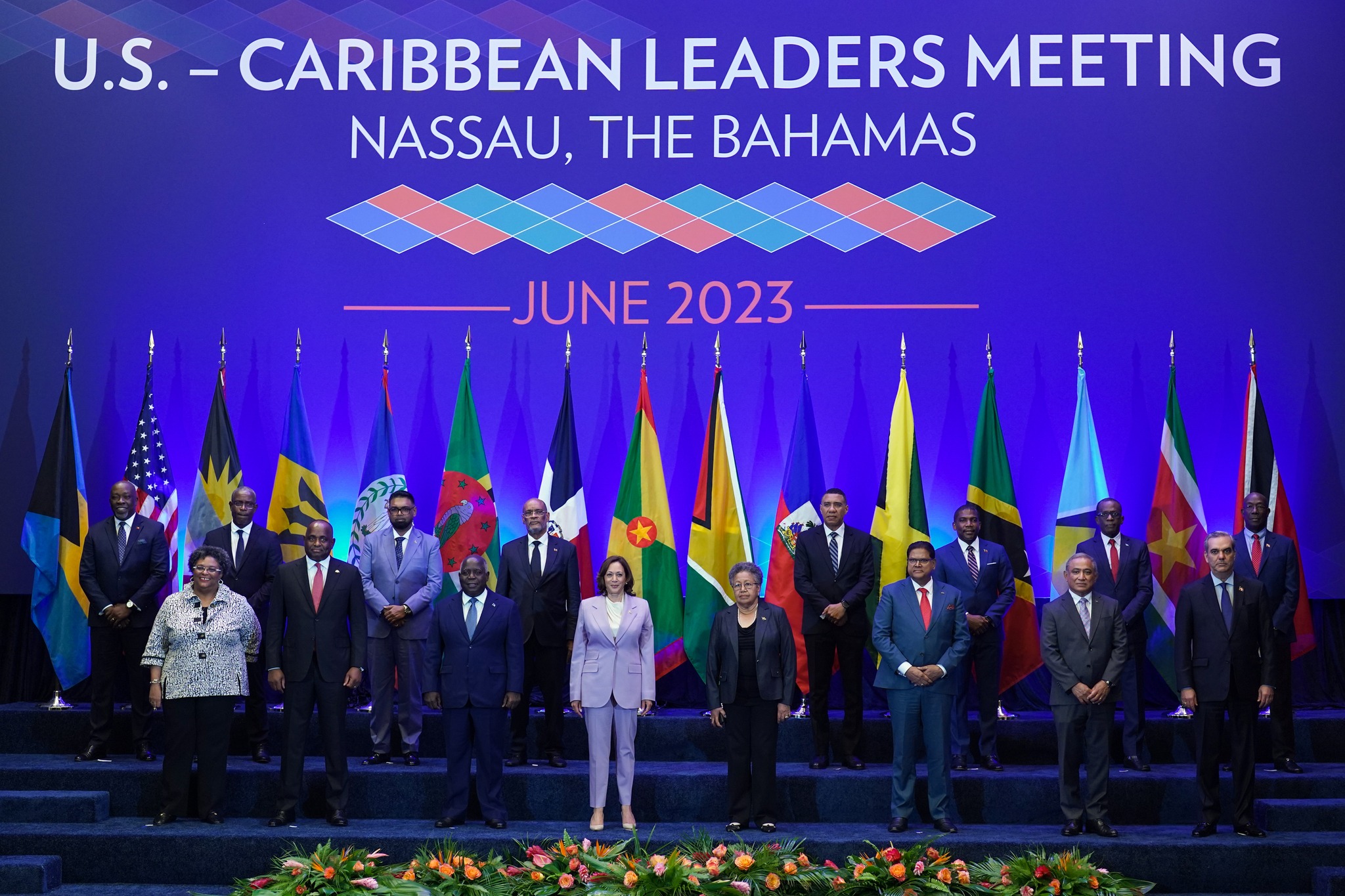Two recent developments on the climate finance landscape cause me some concern.
The first is the agreement at the 2022 Conference of the Parties (COP) of the United Nations Climate Change Convention (UNFCCC) in Egypt, where after years of unrelenting representation by developing countries, agreement was finally reached for the establishment of a Loss and Damage Fund.
Guyana along with other CARICOM countries, as part of the negotiating block of the Association of Small Island Developing States (AOSIS) for the United Nations Framework Climate Change Convention have been unrelenting in their advocacy for the provision of financial resources to support their efforts to adapt to and to mitigate climate change impacts.
Developing countries have argued that their contribution to the global Green House Gas budget is minimal, compared to that of developed industrialized countries but that they are in areas where they are exposed to the consequences of excessive GHG emissions. Now that there is agreement for global action to meet the requirements of the Paris agreement, the need for financial resources at a scale and in a time frame that allows countries to adapt to climate change and to achieve the net zero carbon emissions status, through the transformation of the architecture of their energy systems is of paramount importance.
As a result of the persistent advocacy of developing countries agreement was reached at the Cancun climate meeting in 2009 to establish the Green Climate Fund (GCF) as the Financial Mechanism of the UNFCCC, with a recommendation that it would be capitalised at the level of $100 billion US dollars per year. The Fund had its first full year of operation in 2016 with the approval of thirty five projects worth $1.5 billion US. To date, however, the $100 billion US capitalisation has not been realised.
Loss and Damage became an issue as a result of the concern by developing countries of instances, where, despite efforts at adaptation to climate change, residual Loss and Damage could be experienced and, in such cases, resources would be needed to address the residual Loss and Damage incurred.
The issue was first flagged in the Bali Action Plan, an outcome of the climate change negotiations in Bali in 2007. No concrete action to address it was agreed to until the climate change meeting in Poland in 2013. Constant advocacy by developing countries resulted in inclusion of the issue in the Paris Agreement (2015) in Article 8, which called for action to address Loss and Damage but made no mention of the resources needed to address same. There was no movement on this issue until the negotiations at the climate meeting in Glasgow in 2021, when developing countries further pressed for action on Loss and Damage. This effort culminated in the decision in 2022 at the Egypt meeting to establish the Loss and Damage Fund, some fifteen years after the issue was first laid on the agenda of the global climate change negotiations.
My concern is now that the decision has been made to establish the Fund, it is going to take an eternity to decide the level of funding, who pays, who is eligible to draw down on the fund and the terms of engagement and modalities for accessing the fund. Already, questions are emerging on whether China should be a beneficiary, ridiculous given their level of development and culpability, or a contributor to the fund.
Add to this our experience with the Green Climate Fund (GCF), which as stated earlier was agreed to at the Conference of Parties (COP) for the Climate Change Convention in Copenhagen in 2009. Up to now in 2023, although finally operational in 2016, the Fund has not realised the intended capitalisation at a modest $100 billion US per year– this when recent estimates call for a $4 trillion US per year for global adaptation.
I don’t see the proposed Loss and Damage Fund performing better. Even when the Loss and Damage facility becomes operational, I fear that the same arduous efforts to get access to existing climate funds (GCF, GEF, Adaptation Fund) will prevail and it remains very unlikely that sufficient funding will ever be found. I am not optimistic about the availability of climate finance at the scale and in the time, frame required by poor developing countries to support their own efforts to build climate resilience against the existential and projected climate change.
Our countries have to learn that their best bet for their climate resilience programme is to dig deep into their own resources and start the process now, because waiting for climate finance to materialise and at the level that makes a difference, is like waiting for Godot.
This is precisely the situation facing poor developing countries like Guyana and Suriname that have recently discovered large oil and gas deposits in their offshore areas and in the case of Guyana, moving rapidly to exploit these resources. Both countries are already experiencing the negative impacts of climate change which is posing a serious threat to their developmental aspirations. Revenue derived from the exploitation of their oil and gas deposits can be utilised to address both their climate adaptation and mitigation requirements and place them firmly on the path to achieving both a climate resilient and zero carbon development pathway.
Failure to address the climate resilience challenges facing poor developing countries to existential and projected climate change and doing so in a time frame that takes into account the recent call for urgency of global action in the IPCC Assessment report, will lead to the disruption of their economies, livelihoods and their way of life.
The second issue that causes some concern is the recent entry of the International Monetary Fund (IMF) into the global climate finance landscape. It was recently announced that Barbados has accessed the IMF’s new Resilience and Sustainability Facility (RSF). The stated purpose of the RSF is to “provide financing to support the country’s climate change adaptation and mitigation efforts, and support Barbados’ ambitious goal of transitioning to a fully renewable-based economy by 2030”.
As I understand it, developing countries can now use this facility to access “loans” to finance local climate change adaptation and mitigation efforts. After fighting for years at successive COPs to establish the fact that climate funds for adaptation must be made available to developing countries as grants, the IMF arrangement will instead have countries accessing concessional loans for this purpose. This flies in the face of what was the common understanding about finance for adaptation under the United Nations Framework Convention on Climate Change (UNFCCC).
Even for the Green Climate Fund, it was understood that 50% of the funding will be for grants for adaptation. For years developing countries have been espousing the principle of grant financing for adaptation, but the IMF conditions for accessing climate finance is contrary to that principle.
The distressing thing for me, an octogenarian, who for the last two decades has been in the trenches trying to get financial resources for adaptation in the region, is that part of the package for concessional loans includes a ten year moratorium on first repayment. What that means is that those of my generation will be incurring debts for building climate resilience that would be paid back by our children and their progeny.
Further, the sums being made available globally do not allow countries to implement climate resilience measures at the scale required and simply do not compare to what countries like Guyana stand to extract from their own resources. As we say in the Caribbean, “That’s not cricket!”
Developing countries are already experiencing the severe impacts of a changing climate and are well aware of the interventions that need to be taken to build resilience in their communities and critical socio-economic, human and natural systems that sustain livelihoods. There are several examples across vulnerable sectors of successful interventions to deal with adaptation, many of them at the pilot scale that need scaling up to be impactful. Unfortunately, the resources to do so are not forthcoming.
The present modalities that are required to access Climate finance do not reflect the need for urgent global action and needs to be further expedited.
One can make a strong case for an investment in the energy sector as the Internal Rate of Return on Investment (IRRI) is favourable and would attract private sector investment. Building climate resilience through implementing measures to protect coastal resources, water, health, agriculture, tourism and livelihoods in many cases, require addressing the provision of a public good (e.g., restoration of a degraded mangrove ecosystem or watershed), and should not be viewed solely through a lens of a traditional investment and hence the notion of grant funding becomes relevant.
The IMF should consider a generous grant funding window that would support adaptation in those areas that are unlikely to attract private sector funding but are critical for the survival and wellbeing of the community.
Over the past twenty six years CARICOM countries have worked assiduously to develop an accurate knowledge of how regional climate is changing, what future climate is likely to be, the vulnerability of our natural , human and socio-economic systems to existential and future climate change, measures to be taken to address that vulnerability, implemented some of the latter to deal with climate change challenges to our water, agriculture, coral reefs, mangroves, settlements, infrastructure (adaptation) on a pilot scale.
The region has also taken several initiatives to start the process of implementing the changeover to renewable energy (mitigation). As a region we need to accelerate the scaling up and implementation of these interventions and access to adequate resources in the required time frame is a sine qua non for successful climate change adaptation and mitigation in the Caribbean. Under the circumstances poor developing countries like Guyana and Suriname are left with no option but to fully utilise their newly found oil and gas resources to support their transition to a zero carbon status and build the climate resilience required to ensure their survival in the face of present and projected impacts from a changing climate.
Dr.Ulric Trotz, formerly the Science Adviser at the Caribbean Community Climate Change Centre in Belize, is a highly accomplished and knowledgeable scientist who has made significant contributions in his field. He has held various leadership positions throughout his career, including Director of the Science & Technology Division at the Commonwealth Secretariat, Secretary of the Commonwealth Science Council, and Science Adviser to the Commonwealth Secretary General. He has also served as Secretary-General of the National Science Research Council in Guyana and as Dean of the Faculty of Natural Sciences at the University of Guyana. From 1980 to 1991, Dr. Trotz was the Director of the Institute of Applied Sciences and Technology in Guyana.






